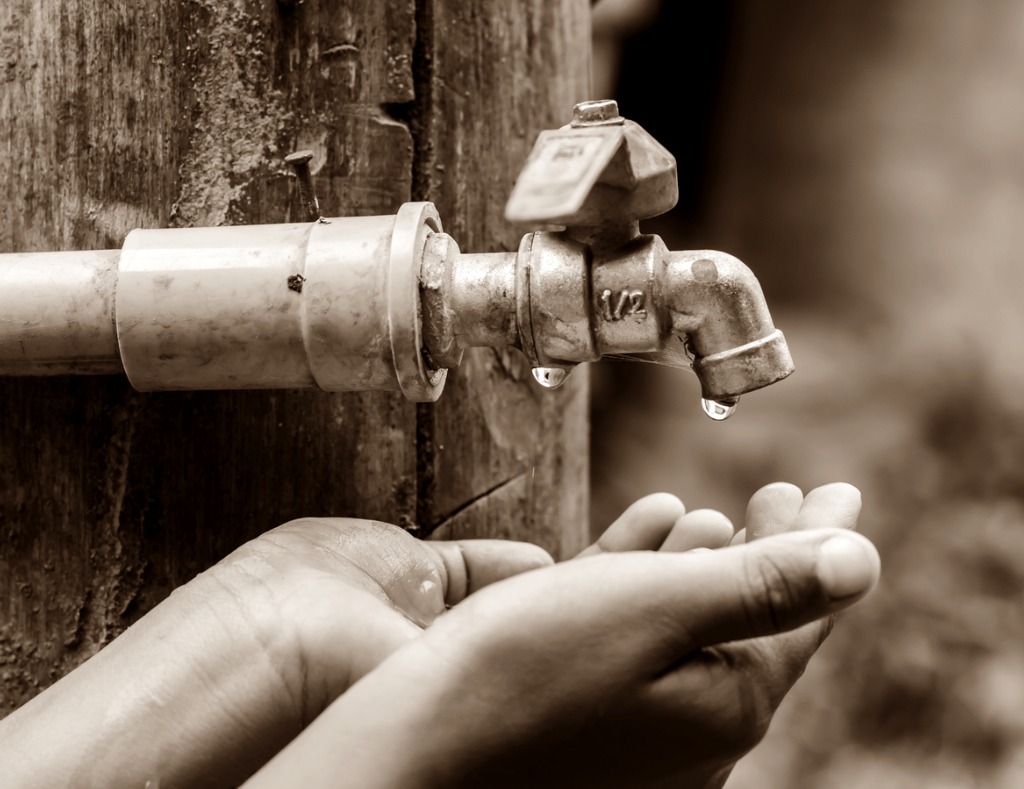
Faced with imminent water crisis, Delhi govt moves SC against Haryana
The Delhi Jal Board (DJB) has moved the Supreme Court against Haryana to avert a severe water crisis, to immediately stop discharge of untreated pollutants into Yamuna and also to release sufficient water for the national capital, said Raghav Chadha, Vice Chairman of the Board.

The Delhi Jal Board (DJB) has moved the Supreme Court against Haryana to avert a severe water crisis, to immediately stop discharge of untreated pollutants into Yamuna and also to release sufficient water for the national capital, said Raghav Chadha, Vice Chairman of the Board.
As per a Supreme Court order of February 1996, the pond level in Wazirabad has to be maintained while the optimum water level in Yamuna near the pond should be 674.50 feet, which has now dropped to 670.90 feet.
Raghav said, “Haryana has cut down water supply to Delhi, as a result, we are facing a shortage. Currently, Haryana, through Carrier-Lined Channel (CLC), is supplying only 549.16 cusecs of water (against 683) and Delhi Sub-Branch (DSB) is supplying 306.63 cusecs (against 330 cusecs).”
The drastic fall in the water level at Wazirabad pond has affected supply at Wazirabad, Okhla and Chandrawal water treatment plants, which supply drinking water to central, north, west and south Delhi.
“Wazirabad and Chandrawal water treatment plants’ capacity has gone down by 30 percent and Okhla water treatment plant’s capacity has come down by 15 percent. Further, the Haryana government’s lackadaisical attitude has led to unchecked dumping of sewage into the Yamuna. Samples picked up by our quality lab show high ammonia content,” he added.
Raw water is sourced from Yamuna river at the Wazirabad barrage. The quantity and quality of raw water at the barrage depends on the release of water by Haryana, which supplies water to Delhi through the CLC, DSB and the Yamuna. CLC and DSB supply water through the Bhakra Nangal Channel.
“Despite notifying officers concerned of the Haryana government several times, no concrete action has been taken yet and there has been no improvement towards restoring any normalcy,” Raghav added.
Being a landlocked city, Delhi relies on water from rivers Yamuna and Ganga, Nangal hydel channel (CLC and DSB) and groundwater aquifers. However, the Nangal hydel channel is among the biggest suppliers of water for the city. Delhi receives at least 232 MGD (million gallons per day) water through the Nangal channel, which meets 25% water requirement of the city (935 MGD).
A Haryana water resources department official said that water shortage is due to the closure of the Nangal channel, as it is going up for repair for the cleaning of the spill gates of the Nangal channel as we are also getting less water. The lack of rainfall and snowfall this year can also be a reason, he added.
Raghav said in his letter to the Centre, “The blind closure of the channel will affect the supply of 232 MGD of water supply from the Beas River to Delhi for one month in March-April. It is 25% of water supply in Delhi and could lead to an unprecedented water crisis and even create a law and order situation.”
Also read: Delhi anticipates parched days ahead as govt halts Beas’ water flow
Raghav said that during summers, Delhi’s water requirement shoots up to 1,000 MGD-1,200 MGD and urged Jal Shakti minister Gajendra Singh Shekhawat to convene a meeting of all stakeholders to discuss the issue at the earliest.
However, the Punjab government is asking for a complete closure of the channel because of the period for irrigation in the state. The Punjab government said that the channel should be completely closed because a portion of a canal near Nangal in Punjab is currently lying in a miserable condition and needs to be repaired.
The India Meteorological Department (IMD) said that in January, against the normal rainfall amount of 33 mm, northwest India received 28 mm; and in February it was 10 mm against the normal value of 45 mm.
Rainfall in September and October last year in Delhi was also 83 per cent and 100 per cent below normal, as per the IMD. IMD also noted a 60 per cent deficit in snowfall in Himachal Pradesh till February which was also the reason they gave for the warmest February in the state after 28 years.
“We have seen this coming. The groundwater in some areas of Delhi has ended. Due to the over-exploitation and mining of Yamuna, the water in the Yamuna has also reduced. The single water source left was the water from the Nangal channel. But this year, due to climate change, a lack of snowfall was observed. Beas river is also flowing below the level. Haryana and Punjab, which are agrarian states will also need water from that as Bhakra Nangal is the only irrigation dam in the area. The condition will get worse in the coming years if nothing will be done,” said Rajendra Kumar, a water activist.


